Stem Cell Therapy in Dallas
Search and Compare the Best Clinics and Doctors at the Lowest Prices for Stem Cell Therapy in Dallas
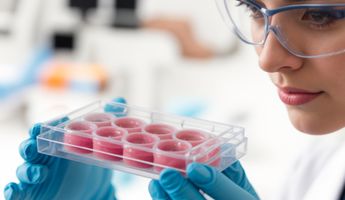
Find the best clinics for Stem Cell Therapy in Dallas
No pricing info available
Malaysia offers the best prices Worldwide
Price: $ 530
Maxim hair Restoration, located in North Dallas, Dallas, United States offers patients Stem Cell Therapy procedures among its total of 24 available procedures, across 3 different specialties. Currently, there's no pricing information for Stem Cell Therapy procedures at Maxim hair Restoration, as all prices are available on request only. There is currently a lack of information available on the specialists practicing at the Clinic, and they are not accredited by any recognized accreditations institutes
- Home
- United States
- Dallas
Compare Before & After Photos of _procedure_photos.phpStem Cell Therapy
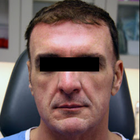
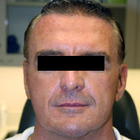
Front view
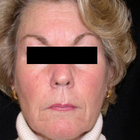
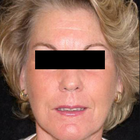
Front view
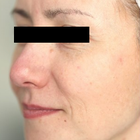
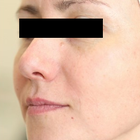
Half-side view
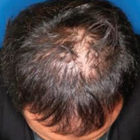
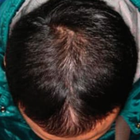
Front view
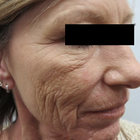
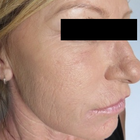
Half-side view
WHY US?
At Medijump, we're making medical easy. You can search, compare, discuss, and book your medical all in one place. We open the door to the best medical providers worldwide, saving you time and energy along the way, and it's all for FREE, no hidden fees, and no price markups guaranteed. So what are you waiting for?

Free

Best Price

Widest Selection

Risk-Free
What you need to know about Stem Cell Therapy in Dallas
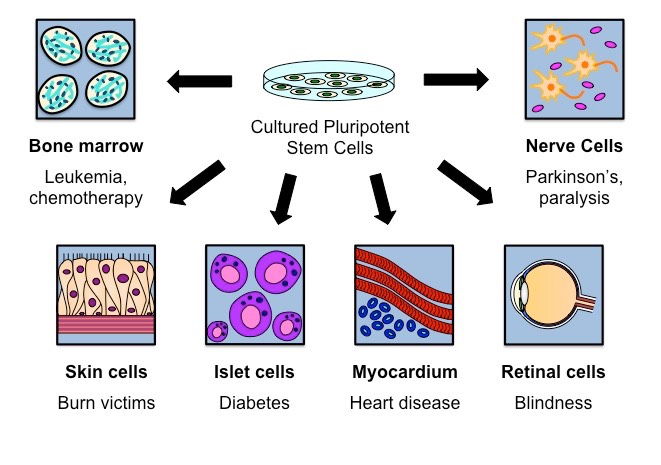
Stem Cell Therapy involves the use of stem cells to treat different diseases. These are non-differentiated cells of a multicellular organism. All the cells in the body are specialized for a specific function but they are the only cells without an assigned function. They can differentiate into any type of cell as and when required by the body and can proliferate rapidly to produce multiple copies of a specific type. Sources of stem cells are embryos and adult body tissues. In the adults, stem cells are present in bone marrow, brain, liver, skin, skeletal muscles, blood and blood vessels. While embryonic stem cells are derived from a blastocyst. Nowadays, the Umbilical cord is being stored under suitable conditions to get stem cells from it if needed. This is useful as chances of transplant rejection are less because stem cells are derived from your own umbilical cord.
Bone Marrow Transplant is the most commonly used method to treat various types of cancers such as lymphoma, multiple myeloma, and leukemia, etc. through stem cells. It is also used to treat brain diseases, cardiovascular diseases and cell deficiencies such as diabetes mellitus. Recently, anti-aging stem cell treatments have gain fame. It is used to restore your youth and beauty.
What is the cost of Stem Cell Therapy in Dallas?
The price of stem cell therapy, also known as Stem Cell Therapy, can fluctuate greatly based on factors like the intricacy and specifics of the procedure, the particular health issue being addressed, and the geographic site of the therapy center or clinic. When compared to conventional therapies, stem cell therapy's cost tends to be rather steep.
Yet, when considering the prospective benefits and potential long-term economic advantages, an increasing number of patients are choosing this therapeutic approach. It's crucial to mention that, although certain health insurance firms may cover the expenses of stem cell therapy for specific situations, a number of them do not due to the considerate speculative aspect of the therapy.
What does a Stem Cell Therapy Procedure Involve?
The procedure of stem cell therapy starts with removing stem cells from your body or from the donor’s body. The cells are collected from different body parts depending upon the need. After collection, the cells are processed according to the purpose for which they are extracted. The processed stem cells are injected into the specific area of your body using ultrasound or X-ray guidance. Anesthetics are used and the procedure is done under sterile conditions. It is necessary to make sure that the cells are reaching the desired area so that the improvement is better and quicker. There are three types of stem cell transplant:
- Autologous transplant - your own body stem cells are removed and used. This type of transplant is safer and recovery is quicker because chances of transplant rejection are less as your own stem cells are being used.
- Allogenic transplant - stem cells are obtained from a suitable donor. Matching is done to find a donor whose white cell antigen closely resembles yours. The donor can or cannot be your relative.
- Syngeneic transplant - stem cells from your identical twin are used. In this case, the chances of rejection are low.
Each type of stem cell transplant involves different methods, procedures, and techniques with different side effects and risks. The one suitable for you depends upon your age, health, and physical conditions.
How Long Should I Stay in Dallas for a Stem Cell Therapy Procedure?
The length of stay in the hospital varies in accordance with the condition for which stem cell therapy is being done. It is usually a 3 to 4 hours procedure (in-patient) in which stem cells are introduced into the body using syringes or catheters. Different factors are considered to decide the length of your stay in the hospital. These factors are:
- You are not suffering from a fever for the last 24 to 48 hours.
- You have a safe blood cell count.
- You are able to eat and drink.
- Your symptoms such as nausea, vomiting, and diarrhea are under control.
- You have someone with you to look after you.
Your stay in the hospital is longer for an allogeneic transplant as compared to an autologous transplant and you're free to leave Dallas the very next day, although it's advised to stay at least a few days in case you have further questions for the medical staff. But of course, these can be asked over the phone/email or directed towards your local medical team back home.
What's the Recovery Time for Stem Cell Therapy Procedures in Dallas?
Complete recovery time varies from 2 to 12 weeks when the patient begins to feel pain relief. However, you can return to your routine work a couple of days after going through the transplant. Recovery depends upon your physical condition before and after the transplant. Over a period of 6 to 12 months, further improvements are seen in the patients. During the process, antibiotics and other drugs are prescribed. These drugs prevent transplant rejection and graft-host diseases. Allogenic stem cell transplant takes longer to recover than an autologous transplant.
What sort of Aftercare is Required for Stem Cell Therapy Procedures in Dallas?
It is advised to keep in contact with your doctor and to visit them on a regular basis. Apart from this, the following points should be considered:
- Minor pain will be present after going through the therapy - icepacks are effective in this regard. Pain might either be because of inflammation or muscle spasm. Inflammation is common due to your immune system activity. Anti-inflammatory medicines are avoided in the initial period because they can interfere with the healing process.
- Walking is good for your health. Rest is not always the best option for quick recovery. Blood flow and oxygen is needed by the treated area which is provided by light activity and movement.
- Ask your doctor about your nutritional requirements and eat healthy according to it.
- Do some joint stabilizing exercises to aid the healing process.
What's the Success Rate of Stem Cell Therapy Procedures in Dallas?
Stem cell therapy's effectiveness, also known as Stem Cell Therapy, can change based on the illness, the age and health of the patient, and the type of therapy used. Although new, stem cell therapy has shown promise in areas like bone, brain, and heart health, it is not always successful due to various reasons, one being the transplant rejection. It is an excellent idea to talk about the possible good and bad outcomes with your doctor before making a choice.
Are there Alternatives to Stem Cell Therapy Procedures in Dallas?
Exosomes are being used as an alternative to stem cell therapy. They are lipid bilayer surrounded vesicles secreted by live cells. They contain mRNA, proteins, chaperons, and various signaling molecules. They work as a natural carrier system for the transport of these substances. They function as a messenger within the body carrying information from one cell to the other. Stem cell therapy can be enhanced using exosomes. They help the body’s natural healing ability to increase the pace of recovery. Sometimes, stem cell therapy and exosomes are given together for better results.
What Should You Expect Before and After the Procedure
Before you proceed with the Stem Cell Therapy, it's typical to have a meeting with your medical professional to examine your unique situation, the potential advantages and drawbacks of the process, and your overall wellness. This discussion will help determine if stem cell therapy is suitable for you. Comprehensive diagnostic evaluations may be necessary to fully examine your health status. The medical professional will guide you through the procedure, describing how the treatment is carried out, what it involves, and what to anticipate. The significance of regular physical activity and keeping a balanced lifestyle before the procedure to boost the effectiveness of the treatment shouldn't be overlooked.
Following the completion of the Stem Cell Therapy, you might feel a slight discomfort, redness, or swelling at the injection site, which typically subsides within a few days. Keep in mind that the recovery process post-procedure may take several weeks or months, as the reinstated stem cells function to fix and reconstruct the damaged tissues. Therefore, a degree of patience may be necessary before noticing the advantages of the treatment. Regular follow-up appointments with your medical professional to monitor your body's reaction to the treatment, assess progress, and control any possible side effects, are necessary. Reinforcing healthy habits such as a balanced diet, frequent physical activity, sufficient sleep, and stress control are crucial components of the post-procedure care.
What are Potential Risks of Stem Cell Therapy?
As with any medical intervention, Stem Cell Therapy is not devoid of risk. However, given that the patients' own cells are generally used, the chance of rejection or allergy is quite low. Possible complications may encompass infection, hemorrhage, or an adverse response to the anesthesia utilized during the operation. Moreover, while stem cells possess the extraordinary capacity to transform into various cell types in the body, there is a possibility they could proliferate without control, leading to the formation of tumors. Nevertheless, such instances are incredibly infrequent and are chiefly linked with embryonic stem cells, rather than the adult stem cells usually employed in the majority of Stem Cell Therapy procedures.
What are the Long-Term Effects of Stem Cell Therapy?
The enduring impacts of stem cell treatment, a fairly recent medical specialty, continue to be probed by scientific research. Nevertheless, some scholarly investigations propose that such a treatment method could offer a sustainable easing of symptoms and potentially decelerate the advancement of particular ailments. The influence of this therapeutic approach differs significantly among individuals and is significantly dependent on factors such as a person's comprehensive health status, the kind and gravity of the disease under treatment, and the specific treatment regimen pursued.
Whilst the information presented here has been accurately sourced and verified by a medical professional for its accuracy, it is still advised to consult with your doctor before pursuing a medical treatment at one of the listed medical providers
No Time?
Tell us what you're looking for and we'll reachout to the top clinics all at once
Enquire Now

Popular Procedures in Dallas
Prices Start From $273

Prices Start From $2,000

Prices Start From $126

Recommended Medical Centers in Dallas for Stem Cell Therapy

- Interpreter services
- Translation service
- Religious facilities
- Medical records transfer
- Medical travel insurance
- Health insurance coordination
- TV in the room
- Safe in the room
- Phone in the room
- Private rooms for patients available

- Interpreter services
- Translation service
- Religious facilities
- Medical records transfer
- Medical travel insurance
- Health insurance coordination
- TV in the room
- Safe in the room
- Phone in the room
- Private rooms for patients available

- Interpreter services
- Translation service
- Religious facilities
- Medical records transfer
- Medical travel insurance
- Health insurance coordination
- TV in the room
- Safe in the room
- Phone in the room
- Private rooms for patients available

- Interpreter services
- Translation service
- Religious facilities
- Medical records transfer
- Medical travel insurance
- Health insurance coordination
- TV in the room
- Safe in the room
- Phone in the room
- Private rooms for patients available

- Interpreter services
- Translation service
- Religious facilities
- Medical records transfer
- Medical travel insurance
- Health insurance coordination
- TV in the room
- Safe in the room
- Phone in the room
- Private rooms for patients available

- Interpreter services
- Translation service
- Religious facilities
- Medical records transfer
- Medical travel insurance
- Health insurance coordination
- TV in the room
- Safe in the room
- Phone in the room
- Private rooms for patients available

- Interpreter services
- Translation service
- Religious facilities
- Medical records transfer
- Medical travel insurance
- Health insurance coordination
- TV in the room
- Safe in the room
- Phone in the room
- Private rooms for patients available

- Interpreter services
- Translation service
- Religious facilities
- Medical records transfer
- Medical travel insurance
- Health insurance coordination
- TV in the room
- Safe in the room
- Phone in the room
- Private rooms for patients available

- Interpreter services
- Translation service
- Religious facilities
- Medical records transfer
- Medical travel insurance
- Health insurance coordination
- TV in the room
- Safe in the room
- Phone in the room
- Private rooms for patients available

- Interpreter services
- Translation service
- Religious facilities
- Medical records transfer
- Medical travel insurance
- Health insurance coordination
- TV in the room
- Safe in the room
- Phone in the room
- Private rooms for patients available
Stem Cell Therapy in and around Dallas
About Dallas
Dallas, or nicknamed as the Big D, is a metropolitan city located in North Texas. The city is known for its massive excellent museums, youthful vibe, edgy culture, and distinctive neighborhoods. Thanks to its charming attractions combined with world-class medical centers, the city is now a rising medical tourism destination. Additionally, the expansion of the medical district in Northwest Dallas has contributed to the city’s popularity as a medical destination. The district is home to numerous significant hospitals and institutions, such as UT Southwestern Medical Center and Parkland Memorial Hospital. More and more people, both from other cities in the United States or from other countries in the world, come to Dallas to get treatment with modern medical equipment, professional doctors, and world-class medical centers. Among the surgeries and treatments available, lung treatment is the most sought-after procedure.
Popular Areas in Dallas
- Dallas Arboretum & Botanical Garden is 66 acres of lush nature that showcases beautiful plants and flowers in themed areas. It has 19 gardens to explore, such as the Woman’s Garden, DeGolyer Gardens, Sunken Garden Crape Myrtle Alee, and Nancy’s Garden. Autumn at the Arboretum is Dallas’ Favorite Tradition during the fall that visitors should not miss. During spring, Pink Hyacinths with violas and daffodils bloom in the gardens, and the whole arboretum is packed with visitors and the nearby streets are closed.
- Nasher Sculpture Center is a museum that houses the Patsy and Raymond Nasher collection of modern and contemporary sculpture. Together, they accumulated one of the most comprehensive private collections in the world. Tourists can admire masterpieces such as works by Alexander Calder, Alberto Giacometti, Henri Matisse, Paul Gaugin, and Willem de Kooning, among others. Designed by architect Renzo Piano, the building itself is a work of art.
- Pioneer Plaza is the biggest open space in Dallas as well as one of the most visited tourist sites in the city. It is surrounded by super detailed sculptures of cattle, trees, and flowers that are native to the area. Tourists can find a small waterfall and creek in the area. There is also an early period cemetery from the 1800s where former Dallas mayors and Texas Revolution leaders are buried. It is truly the place that honors the tradition and culture of Texas.
- Sixth Floor Museum at Dealey Plaza is located in the former Texas School Book Depository, which is the very spot where Lee Harvey Oswald, according to government investigations, shot and killed President John F. Kennedy. The museum uses historic films, photographs, artifacts, and interpretive display to exhibit the social and political landscape of the early 1960s, the assassination of President Kennedy and its aftermath, as well as the legacy that he left behind.
Weather and Climate in Dallas
June to August is Summer in Dallas, and the temperatures can soar to over 30 °C. In addition to the heat, the high humidity levels will make the weather feel unbearable. However, it is the most popular time to visit the city. Autumn brings cooler and pleasant weather to the city. The temperatures can drop to 21 °C, and the city will be less crowded than the summer. Winter starts in December and ends in February. Average daytime highs are around 10 °C, but there are days with below-freezing temperatures. The city may also receive a few days of snowfall. From Mach to May is spring and the temperatures are rising to 21 °C, but there is a lot of rain during this season.
Getting Around in Dallas
The primary international airport is the Dallas/Fort Worth International Airport. It is the ninth busiest international gateway in the United States and operates flights to and from many cities around the world, including London, Dubai, and Tokyo. It is the largest hub for American Airlines, and several budget airlines serve flights from this airport, such as Spirit Airlines and Sun Country Airlines.
The city has a light rail system that connects the downtown with many other areas in the city. It is operated by Dallas Area Rapid Transit (DART) and features four lines (Red, Orange, Green, and Blue) servicing 64 stations. The trains run from 5.00 AM to midnight. There is also another train system known as the Trinity Railway Express (TRE) that connects Dallas and Fort Worth. The TRE trains from Fort Worth and Dallas operate from 5.00 AM to 11.00 PM from Monday to Friday. Dallas Area Rapid Transit also operates an extensive bus system that serves 11,000 stops throughout central Dallas and the Metroplex. Taxis are the easiest way to get around the city, especially for first-time visitors as they are relatively inexpensive with an initial charge of $5 and then $3 for each mile.
Tourists Visas in Dallas
Canada, Marshall Island, Micronesia, Palau, and Bermuda are given visa exemption access to enter the United States. Holders of passports issued by 38 countries, such as Australia, Singapore, and the United Kingdom, are selected for the Visa Waiver Program, which means they can enter without a visa. Other countries not listed in the visa exemption and visa waiver program need to apply and obtain a visa to enter the country. All visitors may stay for up to 90 days. It is advisable to check the visa policy at your nearest United States Embassy.
Additional Information
- Local Currency: The official currency is the US dollar ($). It is considered as a global currency used in many international transactions.
- Money & Payments: ATMs are easy to find, commonly at airports, banks, malls, gas stations, and convenience stores. Credit and debit cards are widely accepted and usually required for reservations. Since service employees make minimum wage, tipping is essential.
- Local Language: English is the most widely spoken language, and more than 29% of the residents speak Spanish.
- Local Culture and Religion: Around 55% of the population is religious. Christianity is the largest religion in Dallas, followed by Islam, Judaism, and eastern faith.
- Public Holidays: New Year’s Day, Texas Independence Day, Independence Day, Thanksgiving, and Christmas are some of the major public holidays in Dallas. The city hosts numerous annual festivals such as Scarborough Renaissance Festival and Texas State Fair.
Popular Searches
- Plastic Surgery in Thailand
- Dental Implants in Thailand
- Hair Transplant in Thailand
- Breast Augmentation Thailand
- Gastric Sleeve in Thailand
- Gender Reassignment Surgery in Thailand
- Laser Hair Removal in Bangkok
- Botox in Bangkok
- Dermatology in Bangkok
- Breast Augmentation in Bangkok
- Coolsculpting in Bangkok
- Veneers in Turkey
- Hair Transplant in Turkey
- Rhinoplasty in Turkey
- Stem Cell Therapy in Mexico
- Rhinoplasty in Mexico
- Liposuction in Mexico
- Coolsculpting in Tijuana
- Rhinoplasty in Korea
- Scar Removal in Korea
- Gastric Sleeve in Turkey
- Bone Marrow Transplant in India
- Invisalign in Malaysia
- Plastic Surgery in the Dominican Republic
- Tummy Tuck in the Dominican Republic
- Plastic and Cosmetic Surgery in Poland
- Rhinoplasty in Poland
- Hair Implant in Poland
- Dental Implants in Poland
- IVF in Turkey
